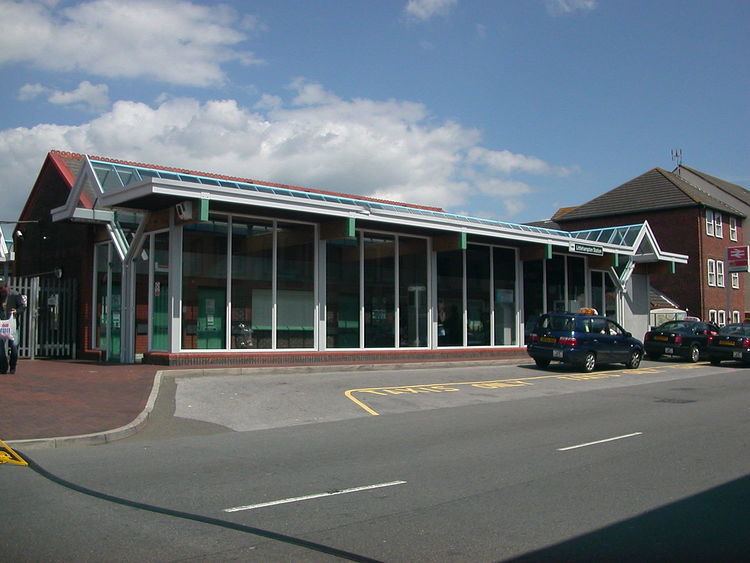Grid reference TQ025021 2011/12 1.020 million | Station code LIT DfT category D Number of platforms 4 | |
 | ||
Address Littlehampton BN17 7EL, United Kingdom Similar Barnham railway station, Goring‑by‑Sea railway station, West Worthing railway st, Durrington‑on‑Sea railway station, Portslade railway station | ||
Trains littlehampton railway station 13th february 2016
Littlehampton railway station is in Littlehampton in the county of West Sussex, England. The station and the trains serving it are operated by Southern.
Contents
- Trains littlehampton railway station 13th february 2016
- History
- Carriage Shed and Stabling Sidings
- Platforms
- Services
- Facilities
- Bus Services
- Accidents
- References
The station is a terminus at the end of a short branch off the West Coastway line. It currently has 4 platforms, two of which are of twelve carriage length, one of eight carriage length and one of seven carriage length. It is served by Class 377 "Electrostars" and Class 313 trains
History
A station called Arundel & Littlehampton opened in 1846 on the main Brighton–Portsmouth Line. This closed shortly after the branch line to the town itself opened in August 1863, when a west-facing connection was made at Ford Junction. In 1887, the third side of the triangle was constructed, allowing through running from the lines from Horsham and Brighton. The south junction was named Littlehampton Junction, while the eastern connection was named Arundel Junction.
A station building similar to that at Arundel was provided; this lasted until 1937, after which redevelopment was severely delayed by the Second World War and planning disputes. One original structure remained until 1986, when Network SouthEast started building a new concourse and ticket office. This was finished late in 1987, and was officially unveiled on 15 January 1988. The line was electrified in 1938, with an official unveiling ceremony being held on 30 June 1938. The station handled goods traffic until 1970.
There is a mechanical signal box to the north west of the station.
Carriage Shed and Stabling Sidings
A locomotive shed was also provided. Built with the station, it also went out of use in 1937 when the line was electrified. Currently in use at Littlehampton is a carriage shed used to store, maintain and clean Class 377 'Electrostars' and Class 313s; more recently next to the shed, two more sidings have been fitted with waste disposal facilities to empty train toilets and are used to store trains over night. Two more sidings were constructed for train storage. Also present is a train washer and siding for trains to dry in. Light maintenance jobs can also be carried out on trains at Littlehampton.
Platforms
Platform 1: Used for services to Portsmouth & Southsea
Platform 2: Used for services to London Victoria
Platform 3: Used for services to Bognor Regis
Platform 4: Used mainly in peak times for services to Brighton, Bognor Regis & Southampton Central
The above may change during service disruption and the Signalling Centre at Littlehampton may place trains in any available platforms.
Services
In a typical day between Monday and Saturday approximately 128 trains pass in and out of Littlehampton.
The typical off-peak service is as follows:
On Sundays, this changes to:
Facilities
Bus Services
Typical off peak service:
4 buses per hour to Brighton via Town Centre & Worthing (Stagecoach)
2 buses per hour to Portsmouth via Bognor Regis & Chichester (Stagecoach)
2 buses per hour to Chichester via Bognor Regis (Stagecoach)
2 buses per day to Gatwick Airport via Worthing (MetroBus)
2 Coaches per day to London (National Express)
2 Coaches per day to Chichester (National Express)
Accidents
On 4 August 1920, the 13.10 train from Ford had a brake failure. The train hit the buffer stops, demolishing them, going through the station and Albert Road, eventually coming to rest in Franciscan way. There were about thirty passengers in the train, of whom thirteen suffered from minor injuries, or from the effects of shock. The driver and fireman escaped injury by jumping from the foot-plate just before the collision occurred.
In the summer of 2009 a train collided with the buffer stops on Platform 2. No one was injured in the collision.
